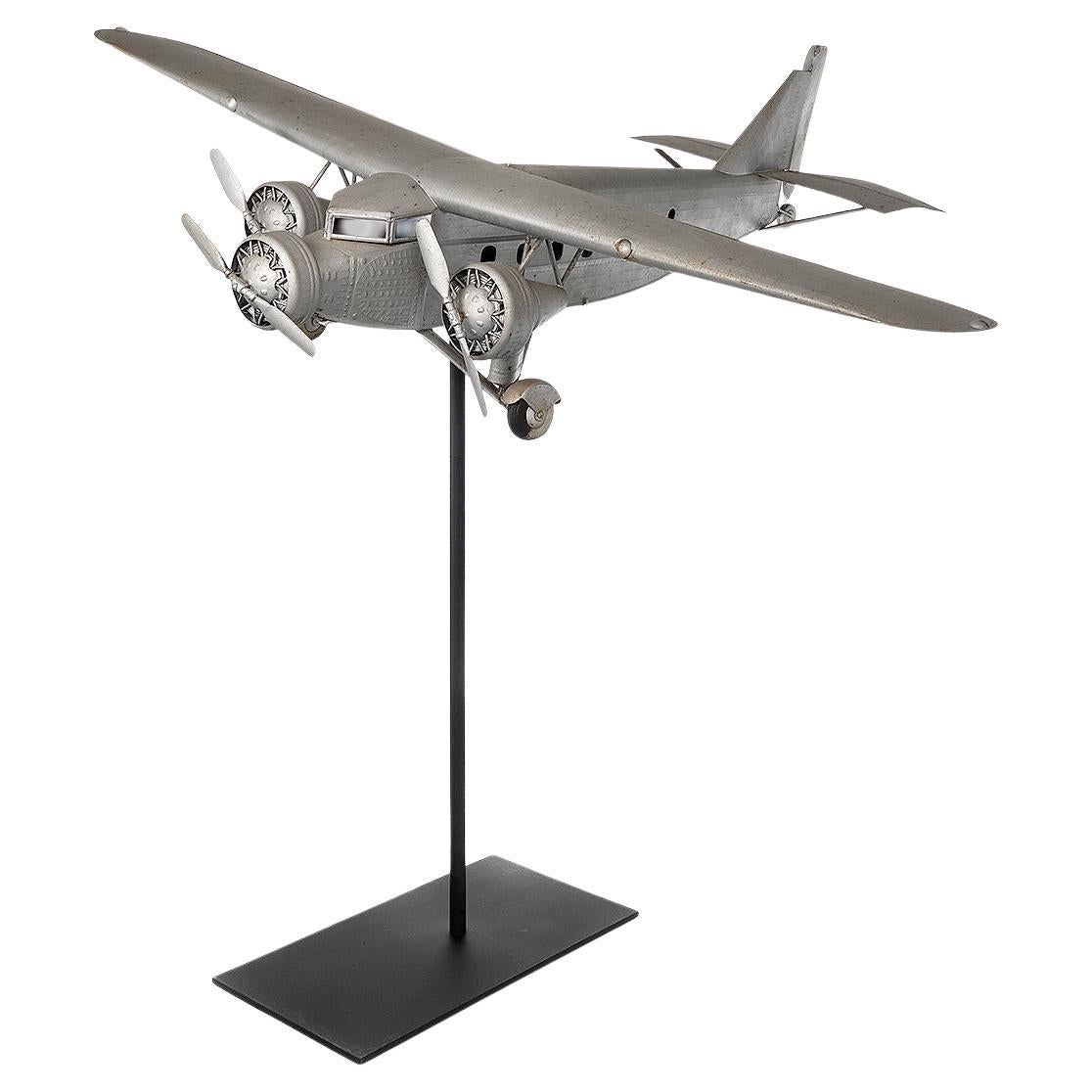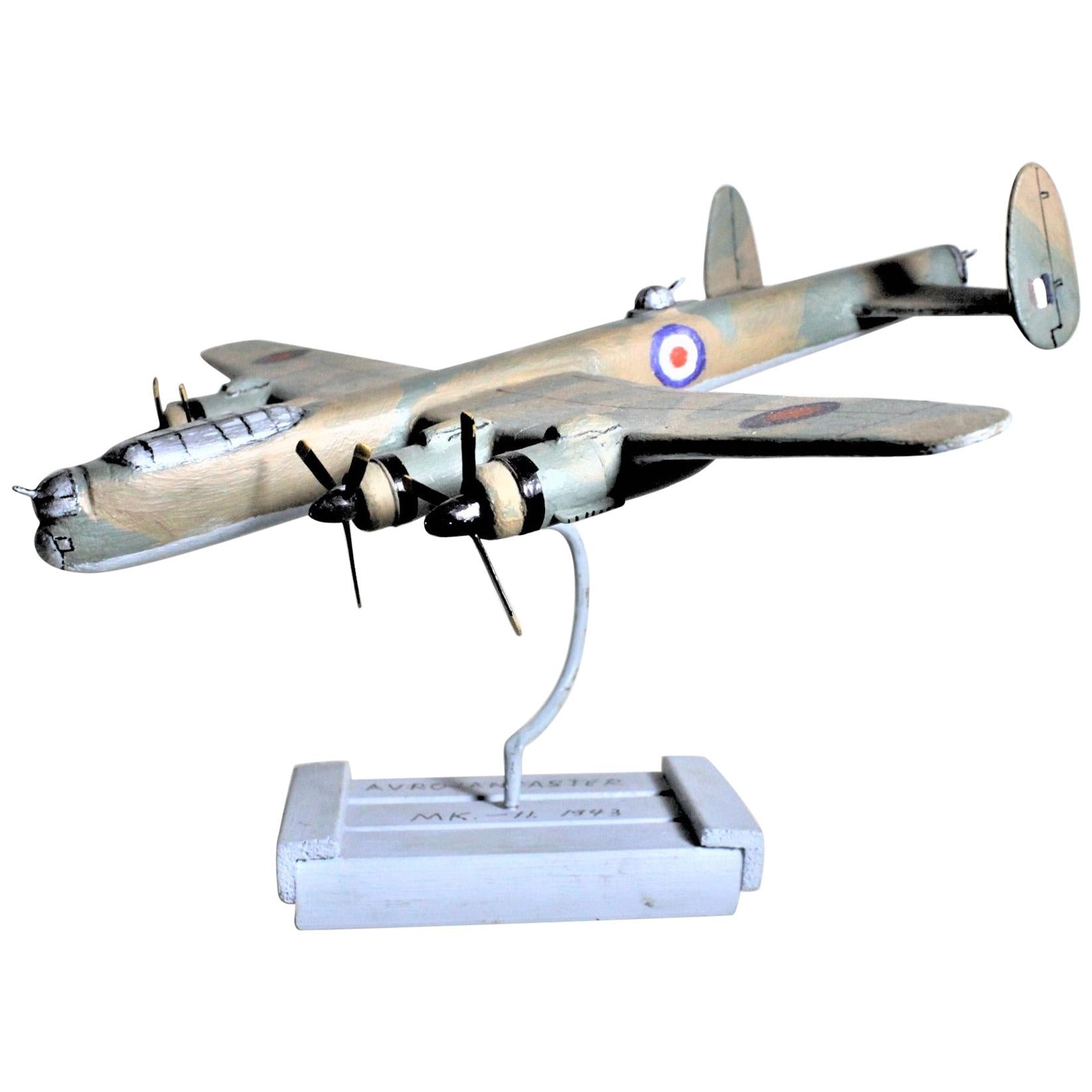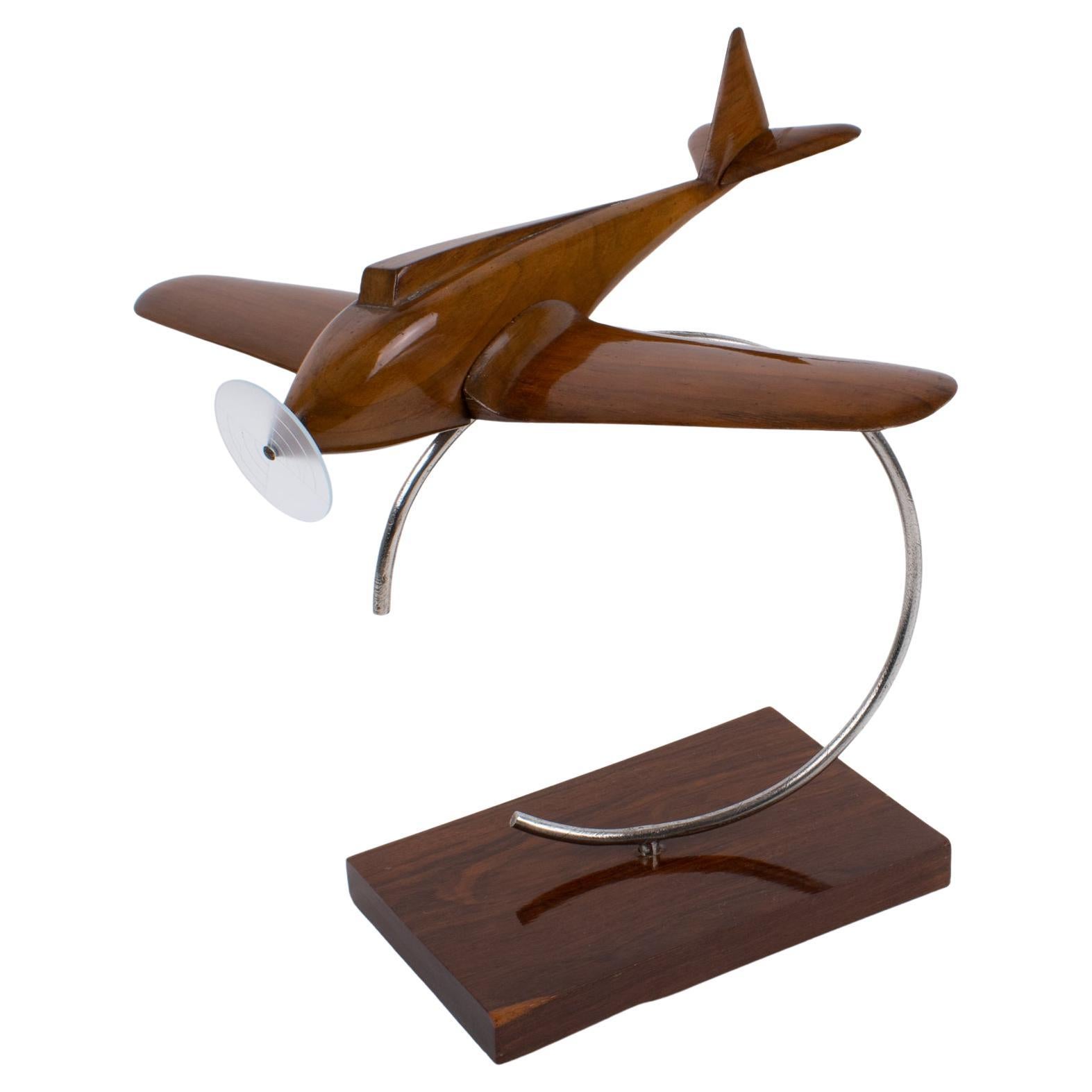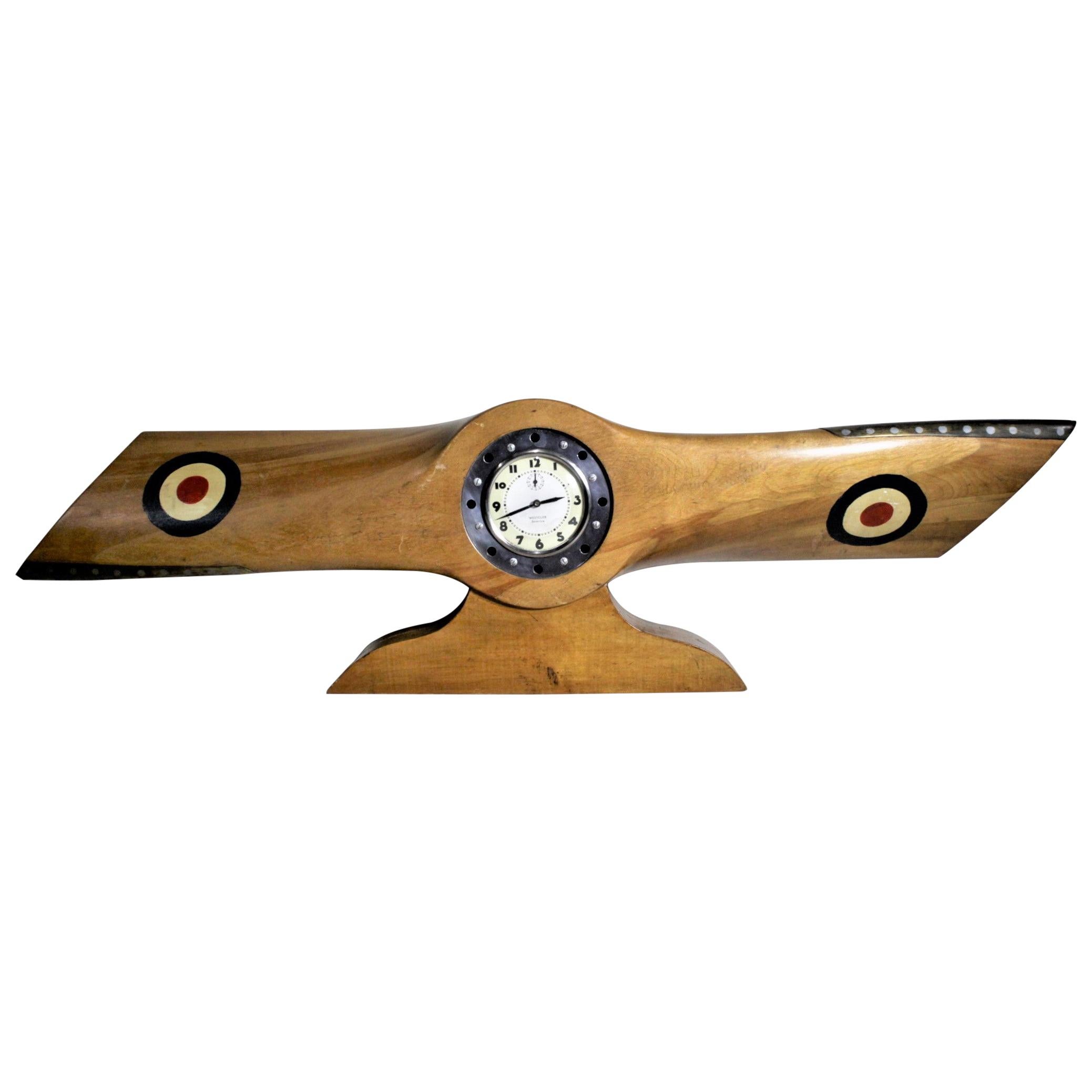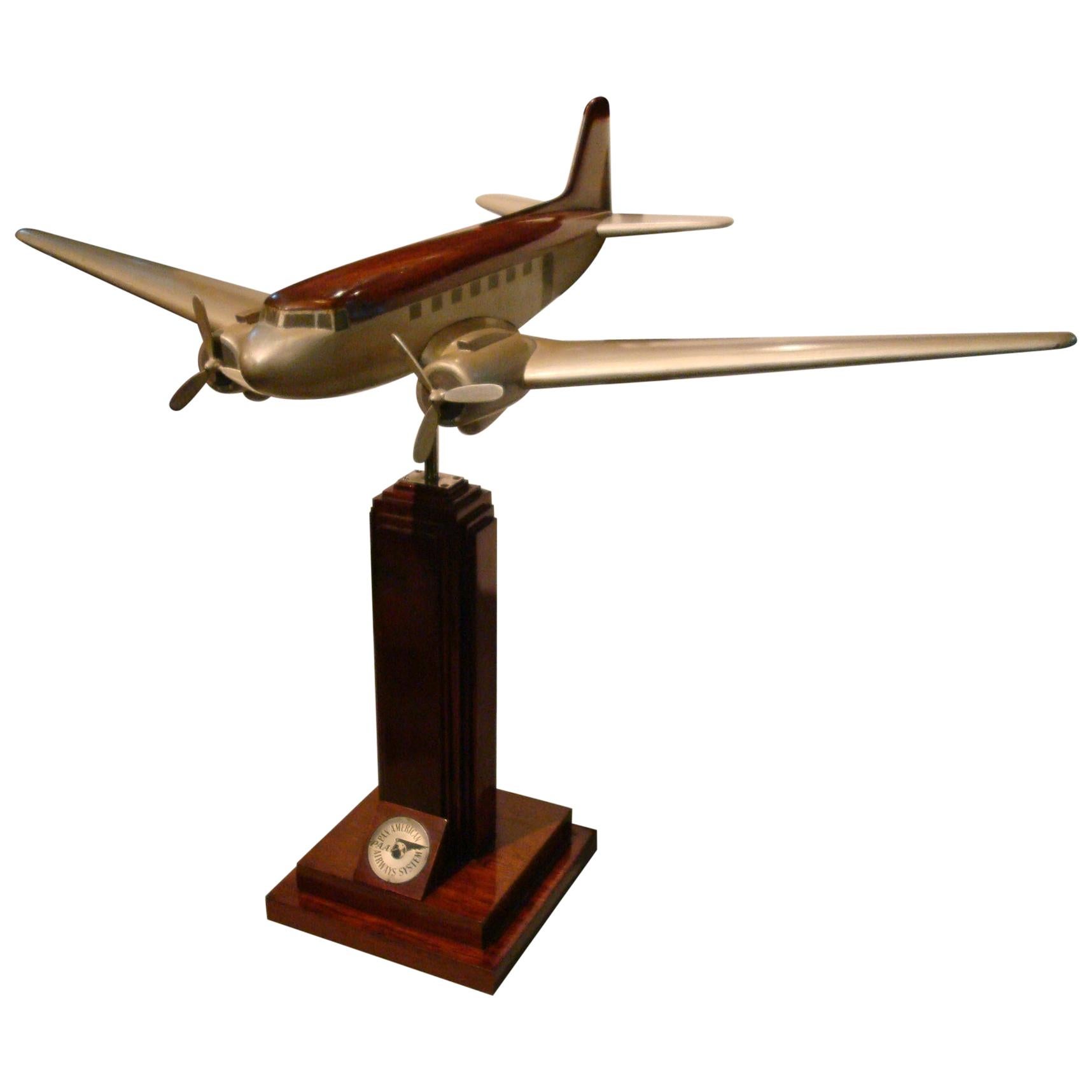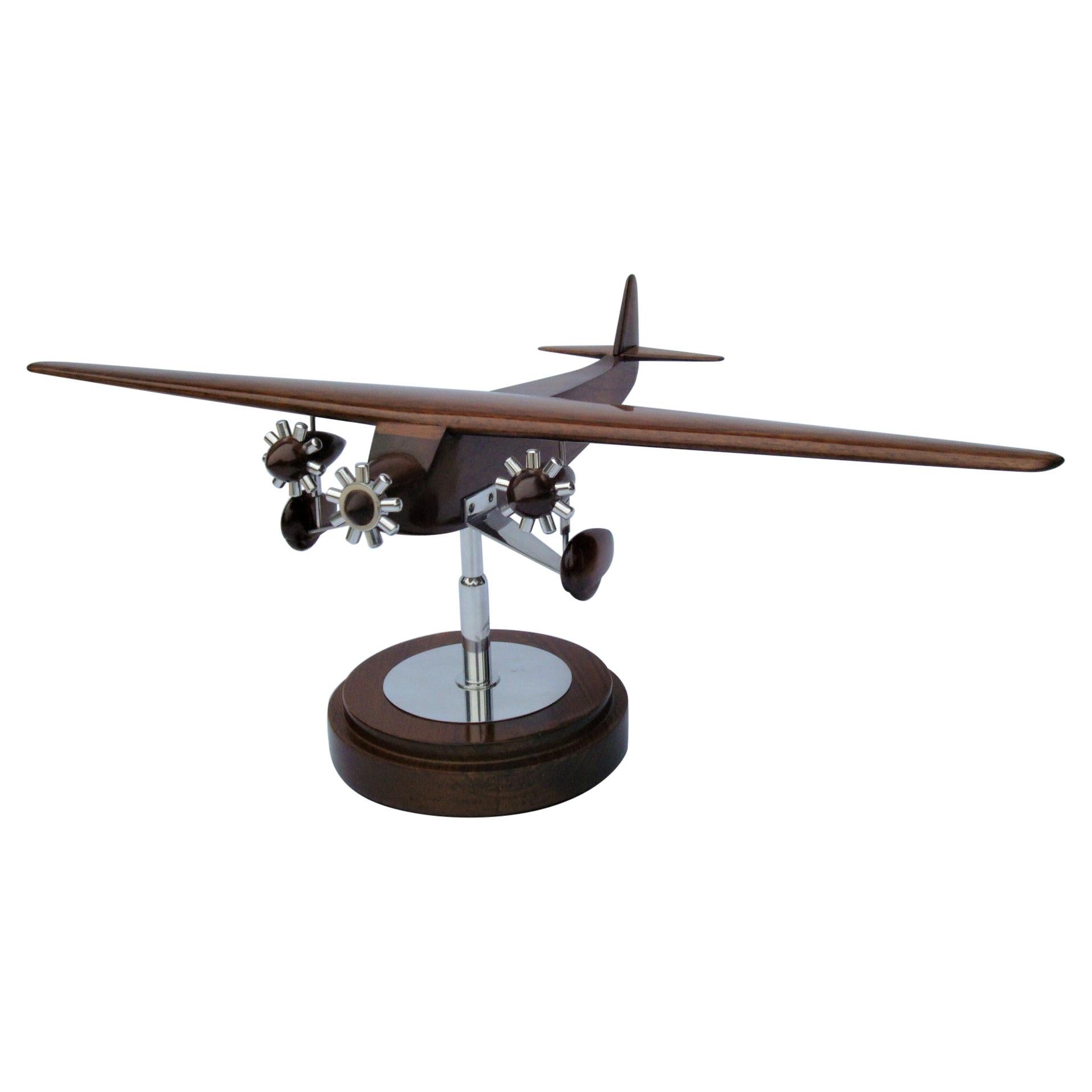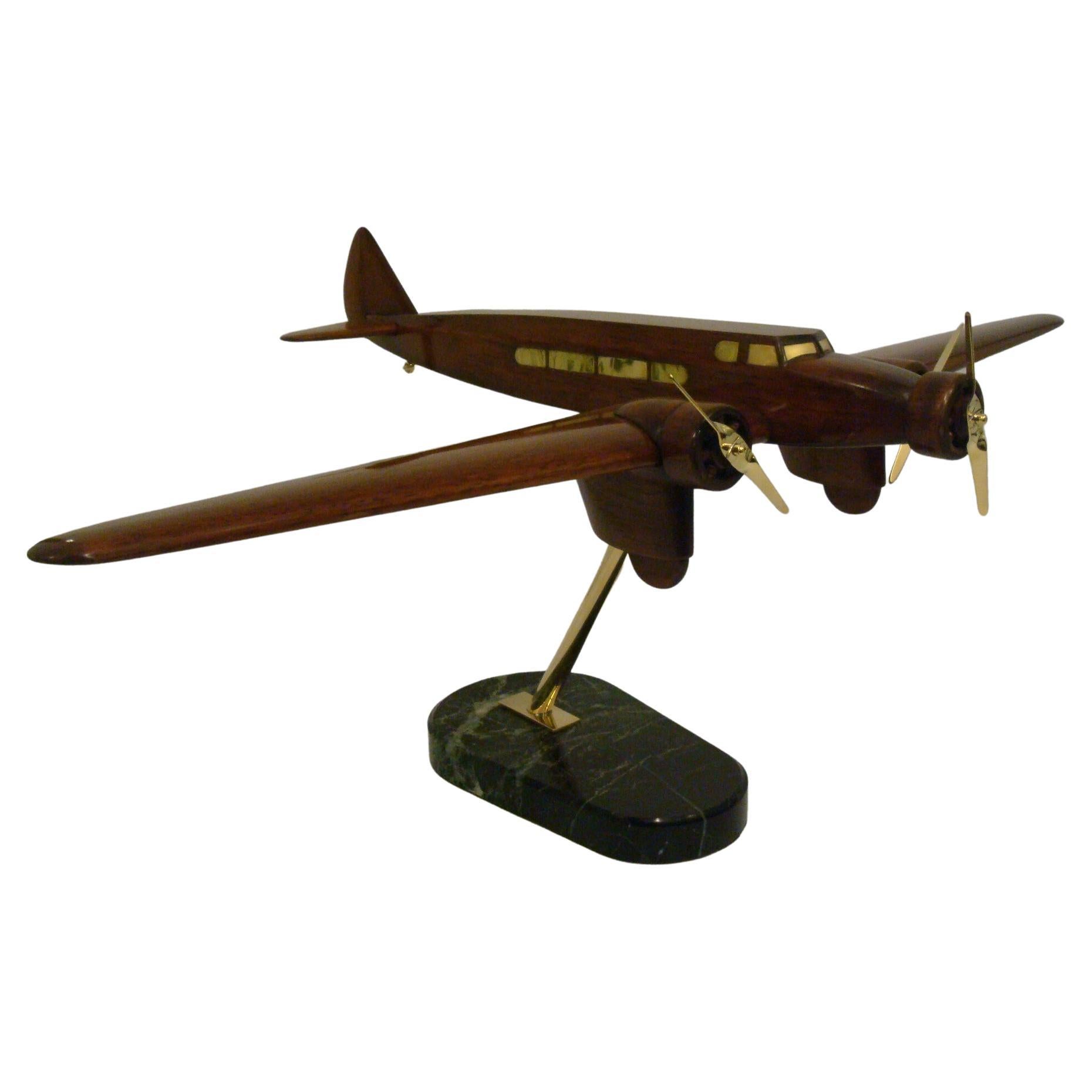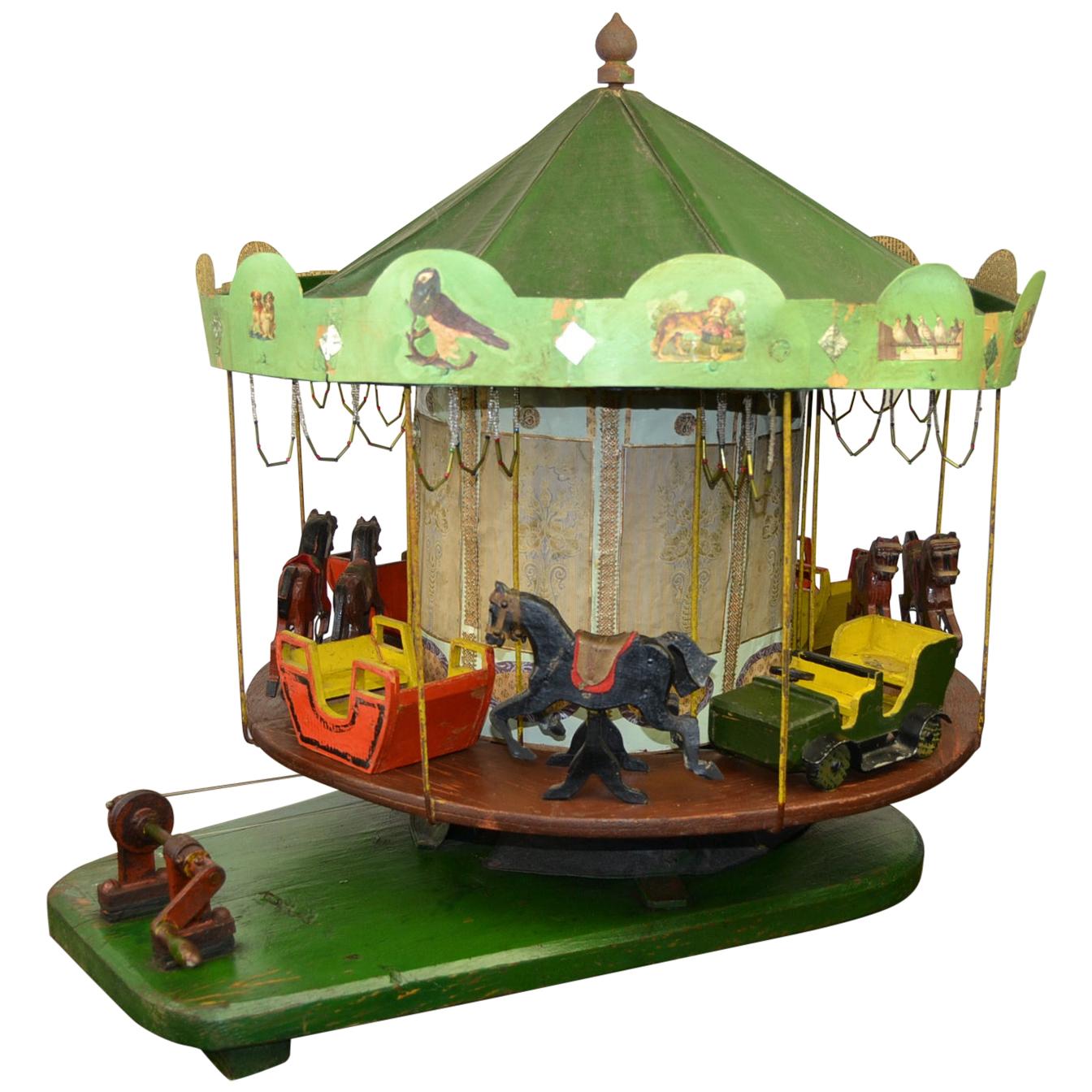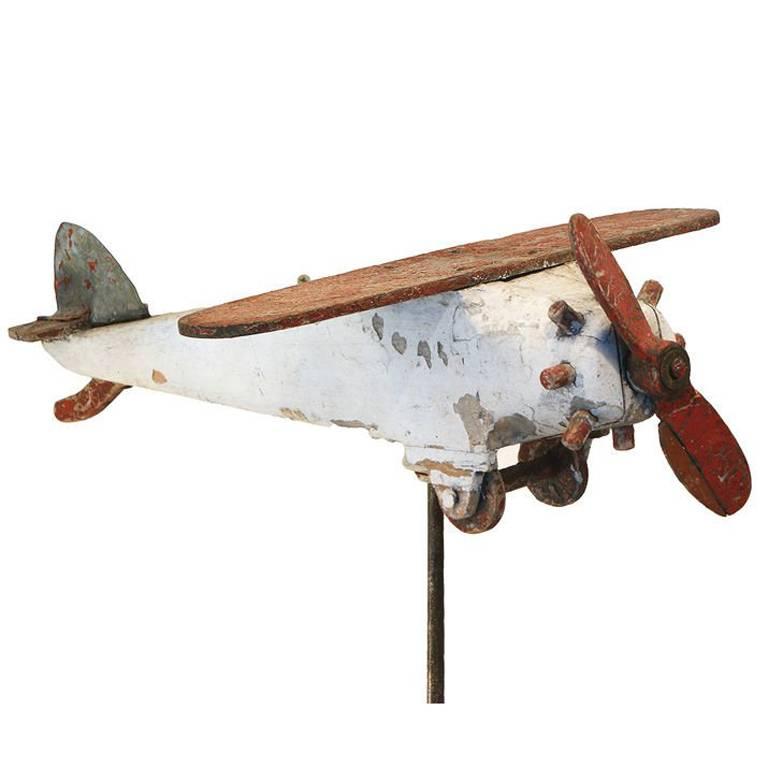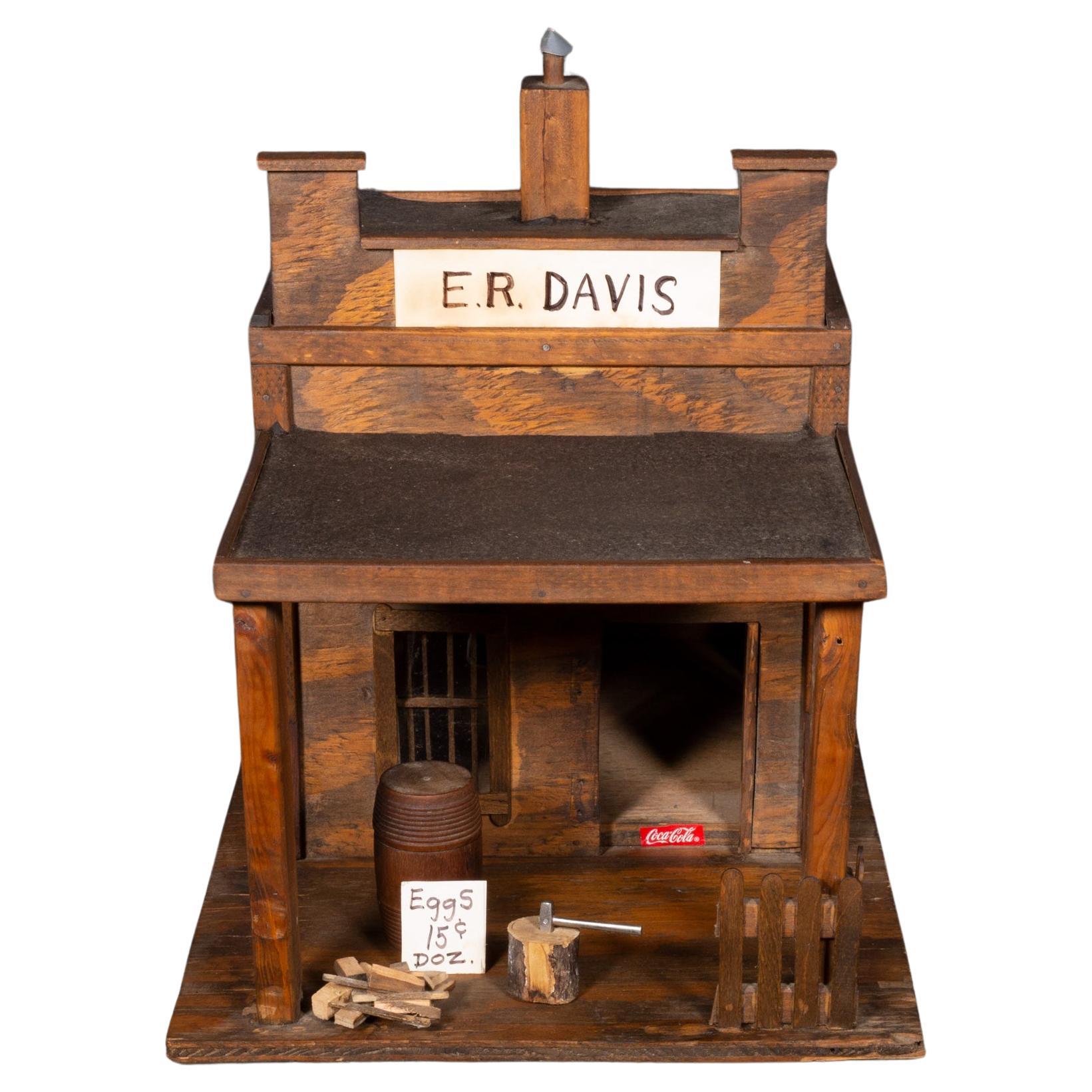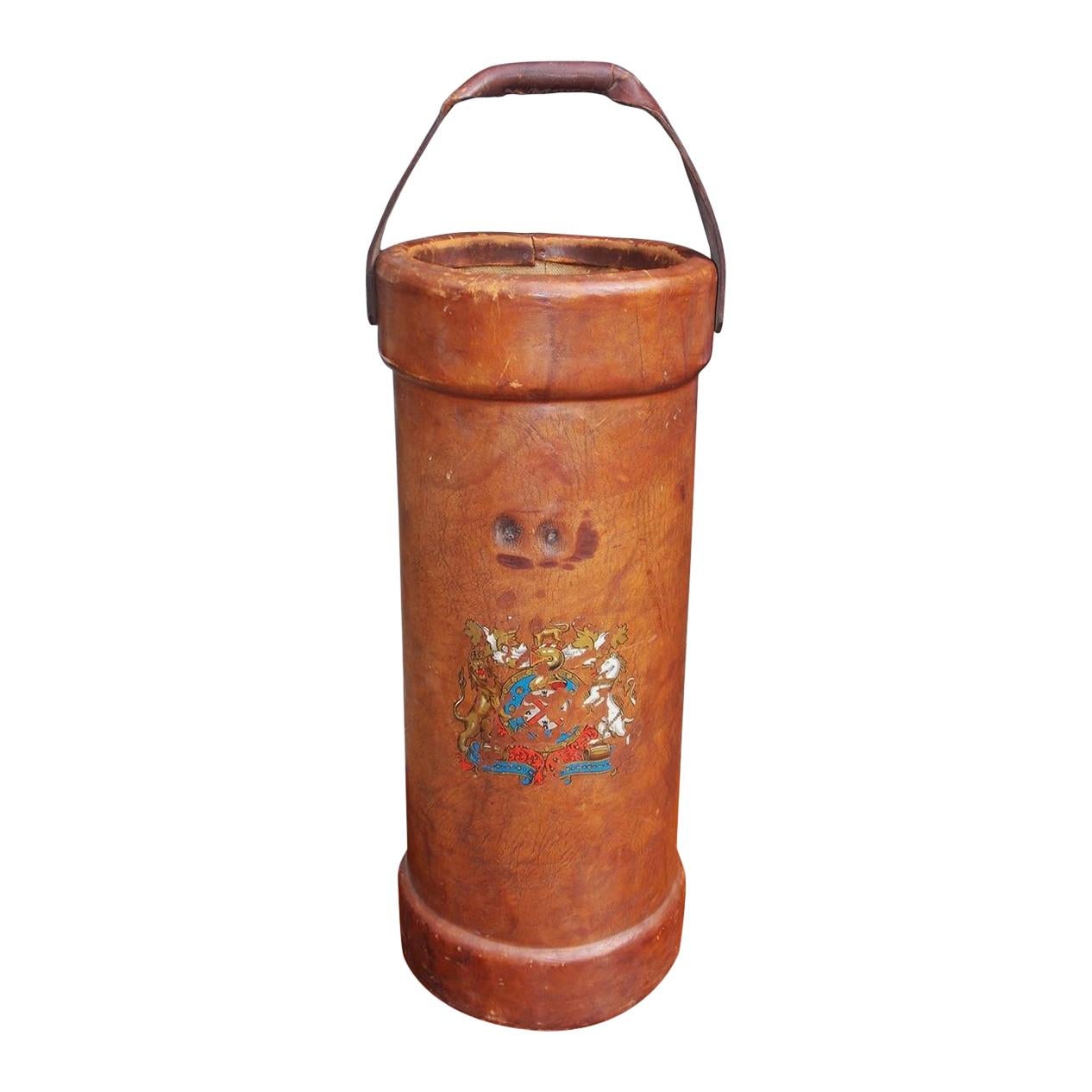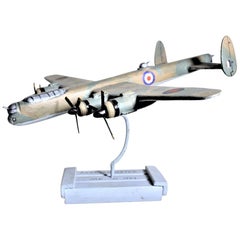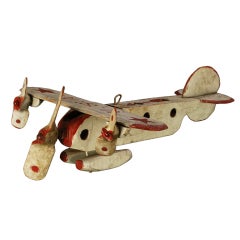
Folk Art Wooden Tri-Motor Airplane Model
View Similar Items
1 of 10
Folk Art Wooden Tri-Motor Airplane Model
About the Item
- Dimensions:Height: 5.25 in (13.34 cm)Width: 21 in (53.34 cm)Depth: 14 in (35.56 cm)
- Place of Origin:
- Period:
- Date of Manufacture:20th Century
- Condition:very nice condition with age appropriate wear. Previous repair to tail piece as shown in photo.
- Seller Location:Dallas, TX
- Reference Number:Seller: 62631stDibs: U1207098687420
You May Also Like
- Large 1930s Ford Tin Goose Tri-Motor Airplane ModelLocated in Peekskill, NYThis is a large delicate tin model made around the same time the real Tin Goose was flying. The wingspan is an impressive 40 inches. The wheels are rubber and the 4 part windshield is glass. I'm surprised the model survived in such nice and complete condition for about 90 years. We had a custom display stand made for it that brings it to another level. Between 1926 and 1933 some 200 Trimotors were built in Ford's own factory. Corrugated metal on great thick monoplane wings was a German development, used in Junker JU-52 planes that were flying the Berlin-Rome-London route. Trimotors were flown by airlines, oil companies and wealthy individuals. The Ford Trimotor...Category
Early 20th Century Streamlined Moderne Models and Miniatures
MaterialsTin
- Folk Art Wooden Hand Carved and Painted WW2 Lancaster Bomber Model AirplaneLocated in Hamilton, OntarioThis handcrafted Folk Art model of a Lancaster Bomber is signed on the base, but the artist could not be identified so is posted as Unknown. This wooden airplane model...Category
Late 20th Century Canadian Folk Art Aviation Objects
MaterialsSoftwood
- Art Deco Wooden Airplane Aviation Model, France 1930sLocated in Atlanta, GAStylish Art Deco wooden airplane model mounted on a geometric wood and metal display. This Art Deco model airplane is in solid wood with a lovely warm patina. It has one large Lucite...Category
Vintage 1930s French Art Deco Aviation Objects
MaterialsMetal, Copper
- World War 2 / WWII Era Wooden Airplane Propeller Folk Art Mantel ClockLocated in Hamilton, OntarioThis wooden Folk Art made propeller clock is presumed to have originated in England and fashioned into a mantel clock in North America in circa 1960. T...Category
Mid-20th Century English Folk Art Mantel Clocks
MaterialsWood
- Art Deco Pan-Am DC3 Wooden Airplane Desk Model, MidcenturyBy Pan American AirwaysLocated in Buenos Aires, OlivosArt Deco / midcentury large DC3 desk aviation model. Pan-Am wooden airplane model. It was in an office of the company in South America. Very good restored conditions. Slight age wear. History Pan American Airways began the first transatlantic passenger service on this day in 1939. Pan American World Airways, as it was to be known, commonly known as Pan Am, was the principal United States international air carrier from the late 1920s until its collapse on December 4, 1991. Founded in 1927 as a scheduled air mail and passenger service operating between Key West, Florida, and Havana, Cuba, the airline became a major company credited with many innovations that shaped the international airline industry, including the widespread use of jet aircraft, jumbo jets, and computerized reservation systems. The history of Pan American Airways is inextricably linked to the expansive vision and singular effort of one man – Juan Trippe. An avid flying enthusiast and pilot, Trippe, only 28 years old when he founded the airline, lined up wealthy investors and powerful government officials from his personal acquaintances in the high-society of the 1920s. However, Pan Am’s first flight was an inauspicious start to its epic saga. In 1927, facing a Post Office deadline for the commencement of mail carriage, Pan Am had no working equipment for its sole airmail contract between Key West and Havana. Fortunately for Pan Am, a pilot with his Fairchild seaplane arrived at Key West and was willing to carry the mail to Cuba for the start up operation. It is fitting that Pan Am’s first flight would be over water, since the airline would Pioneer overseas routes throughout its history. Pan Am’s fortunes took a turn for the better in the fall of 1927. Through the heavy lobbying efforts of Juan Trippe, Pan Am was selected by the United States government to be its “chosen instrument” for overseas operations. Pan Am would enjoy a near monopoly on international routes. Added to Pan Am’s Cuba route were lines serving Mexico, Central America, the Dominican Republic, Haiti and Puerto Rico. Most of these destinations were port cities, which could be reached only by landing on water. Therefore Pan Am made good use of its “flying boats,” the Sikorsky S-38 and S-40. Flights were eventually expanded to serve much of South America as well. EnlargePan Am’s fleet of Clippers allowed the airline to conquer the Pacific in the mid-1930s. The flying boats would later be put to military use in WWII. Just a few years later, Pan Am launched its effort to cross the world’s largest oceans. Survey flights across the Pacific were conducted with the Sikorsky S-42 in 1935, but passenger service required bigger and better aircraft. Accompanied by much fanfare, the Martin M-130 was introduced in 1936, followed by the Boeing 314...Category
Mid-20th Century Unknown Mid-Century Modern Aviation Objects
MaterialsWood
$5,260 Sale Price38% Off - Art Deco Ford Trimotor Desk Airplane Wooden Model, ca. 1925Located in Buenos Aires, OlivosArt Deco Ford Tri-motor desk airplane wooden model - ca. 1925. Fantastic desk / counter airplane, made of polished wood and polished aluminium. Fully Restored and ready to display. Some History: The Ford Trimotor...Category
Vintage 1920s American Art Deco Aviation Objects
MaterialsAluminum
$4,160 Sale Price20% Off
